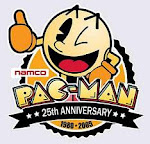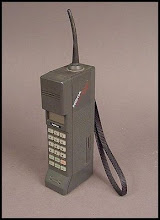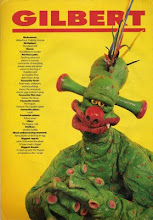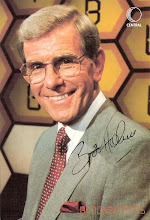 Since the design, production and issuing of the first new decimal coins in the 1960s, and full decimalisation in 1971, not much had changed in the world of UK coins.
Since the design, production and issuing of the first new decimal coins in the 1960s, and full decimalisation in 1971, not much had changed in the world of UK coins.And then, in the early-to-mid 1980s, several changes occurred.
In 1980, the old sixpence ceased to be legal tender.
We gained the very first twenty pence coins in 1982.
Then, in 1983, we gained the very first pound coins.
And then, in 1984, the half penny ceased to be. It had been an unpopular coin for years, many people thought it not worth the bother. But still, some mourned its passing. One tabloid newspaper even published a full history of the half penny - going back centuries into the pre-decimal era.
The £1 coin, which would prove to be the death of the £1 note, was unveiled in 1982, although it would not become legal tender until 1983, and a fascinating "Public Opinion Special" in the Daily Mirror on March 10, 1982, revealed a mixed bag of opinion regarding the new coin - and what it should be called...
From the Mirror:
When Britain's new £1 coin was unveiled on February 10, we asked readers to send us their ideas for a name for the new coin. The response ranged from the sublime to the ridiculous. Many reflected their dismay with the continuing drop in the value of the pound. Here is a selection of some of the many letters we received.
What's wrong with continuing to call it a pound? But if you REALLY want to know what I think about it, it's unprintable!
It's going to be a terrible nuisance. We already have to deal with bulky coins which don't fit into wallets.
I've already broken the clasps on two good ones and my husband is wearing away more trouser pockets than I care to count - Mrs O.F., Solihull, West Midlands.
The name that springs to mind is Joker. Looking like gold and calling itself a pound is a joke for a start, isn't it? - A.T., Redhill, Surrey.
A Monarch would be my choice. It has the flavour of sovereign about it but it is more original - Mrs G.R., Surrey.
We should follow the French example and call ours the Brit - R.P., Waltham Abbey, Essex.
I shall call the new quid a Thatcher. It will remind me that it was minted during the office of the worst Prime Minister this country has ever known - J.F., Northolt, Middlesex.
The new coin should be a tribute to the Princess of Wales.
An anagram of her name works out as Adina. It's attractive and easy to say. What could be more suitable than that! - Mrs B.S., Wilmslow, Cheshire.
Let's call it a Di! - Mrs E.K., Brackley, Northants.
Why not call it a "mite"? Judging by the size of it, you "mite" be able to find it among your small change and you just "mite" be able to buy something with it. Then again, you "mite" not! - T.C., Cleveland.
It should be called a Tory because, like the Tories, it's worthless! - B.C., Omagh, County Tyrone.
It should be called an Eliza, because you will be able to "Doolittle" with it! - W.S., Harlow, Essex.
Of course, despite all the little grey cells being exercised above, we called the new pound coin a pound. Or a quid. Just as we had the old notes.
Also in the 1980s world of loose change, we dropped the "New" from "New Pence" on the original decimal coins designed back in the 1960s.
Well, they weren't that new any more.
In 1986 the very first £2 coin was produced - to commemorate the Common Wealth Games, held that year in Edinburgh. This was purely a commemorative coin - not produced for mass circulation, as was the second £2 coin, struck in 1989, to celebrate the tercentenary of the English Bill Of Rights. Scotland had its own 1989 £2 coin to celebrate the tercentenary of its Claim Of Right.













No comments:
Post a Comment